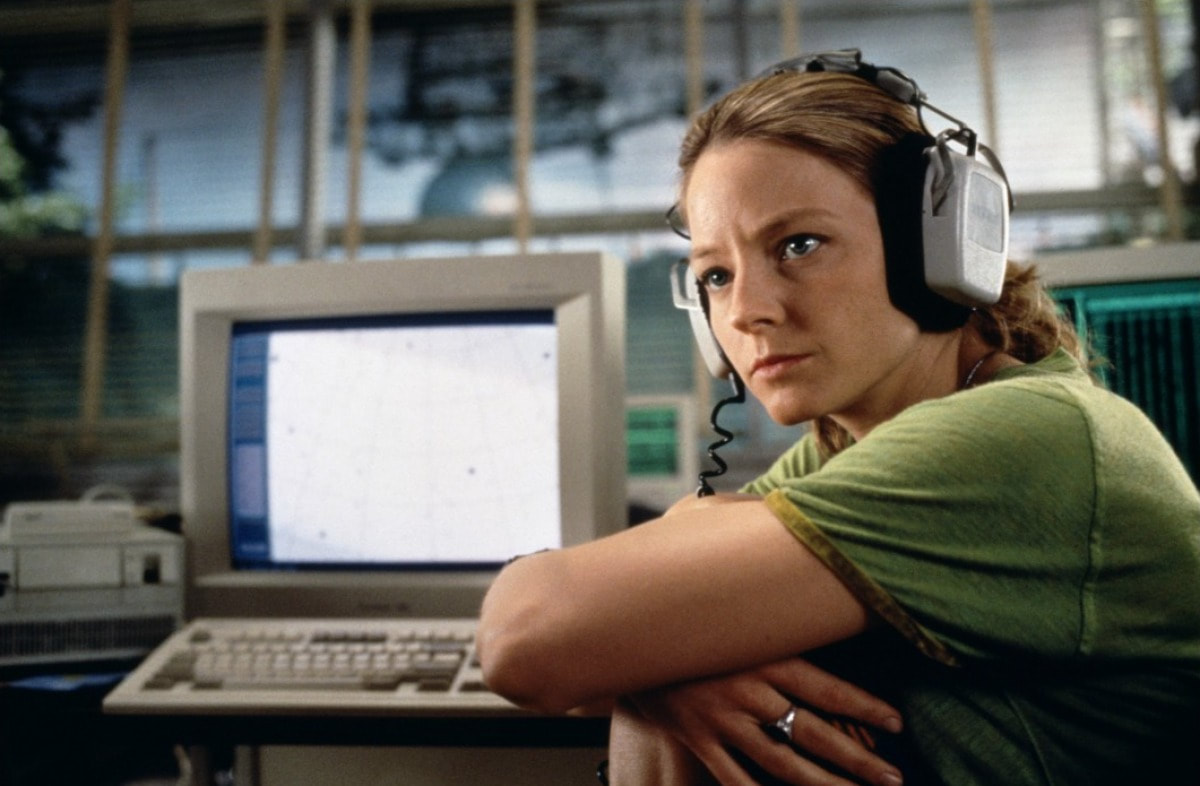Surrounding Arroway, who represents the spirit of inquiry and materialism, are other walking archetypes. Matthew McConaughey plays Palmer Joss, a religious author and thinker who insists that the unknowable and unquantifiable parts of the world are where god exists. Joss and Arroway have a romantic rendezvous and keep running into each other as the film continues, often sharing long discussions about their respective philosophies. Tom Skerritt's David Drumlin represents ambition and bureaucracy as a representative from the government who, when he isn't cutting Arroway's funding, is trying to take credit for her discoveries. John Hurt plays an eccentric billionaire subbing in for hubris and a fear of death. This inelegant writing trope doesn't detract from the momentary experience of watching the film because the actors all sell their passions and motivations. The strings only become apparent once the film has relaxed its grip.
Much of Contact is a vehicle for Sagan's greatest hits, but it never approaches didactic. Some things are inarguable, like the value of funding SETI or the space program, and no one challenges them without coming away with egg on their face. The faith versus science debate that Sagan wrote so much on is where the film could get into trouble for being too in favor of one side, but Sagan, Druyan, and co-writers James Hart and Michael Goldenberg allow Joss to get some punches in. Contact contains lectures, but it is not itself a lecture. There are some caricatured religious figures, like a Marshall Applewhite type and a Ralph Reed type, and while the film clearly sees them as laughable and hypocritical, Joss is an earnest character given soulful wisdom by McConaughey. Further adding nuance to the film is a well-balanced final dilemma that beautifully threads the needle between the head and the heart.
In the lead, Foster is well-suited for Arroway, another of her characters that must speak her truth in a male-dominated field. She brings joy and passion to the role, retaining the enthusiasm that the viewer first witnessed in her character when she was a little girl. She has no problem coming across as a credible scientist and communicator. In the conference room, surrounded by colleagues and military men, Zemeckis includes small moments of marginalization against her that register briefly on her face as the slights that they are. Not all data and graphs, Arroway's lighter moments are all believable and unforced. Foster is completely natural in the role, a merging of actor and character both getting to do what they love.
Contact cinematically rhymes with Contagion, another film about scientific process and an attempted depiction of a theoretically-plausible event. However, where Contagion is largely airtight, Contact unquestionably has some holes in its plot, holes that it relies too heavily on Hurt's untold billions to solve. It keeps the film from being an objective masterpiece on top of the subjective masterpiece that I believe it is. No matter how flawed the plotting, I cannot do anything but love a film that leaves me blubbering with its simple, earned closing shot. Sagan was a humanist who was capable of marveling at the macro and the micro, of reconciling our cosmic meaninglessness with our intimate value. Contact is an imperfect vessel for his message, but its power is undeniable. A-

 RSS Feed
RSS Feed